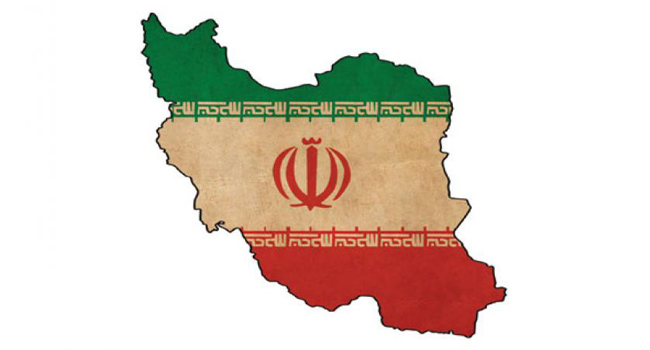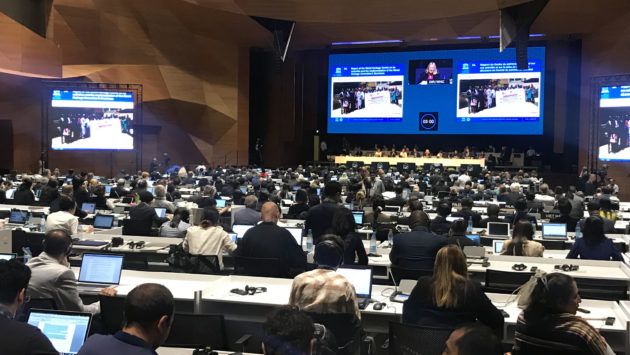Experts: Water Drought is One of Three Crises Threatening Iran
Shafaaq News \ Iran is approaching a phase of water drought, and the possibility of returning to normal water levels is nearly impossible
This is what independent experts say, as confirmed by the Vice President of Iran, the President of the Environment Organization, Issa Kalantri, and an official responsible for the revival of Lake Oromieh, who served as Minister of Agriculture – and who also is the primary suspect in the waste of water and the entry of Iran to a point of no return with regards to the shortage of water.
Statistics show that Iran’s strategic water reservoirs have fallen by 90 percent in nine decades, and 80 percent in the last four decades. The water rate has decreased from 13,000 cubic meters per year to 1,400 cubic meters. More than 60 percent of Iranian dam reservoirs are empty. Of the 220 large cities in Iran, 140 face a severe water crisis. More than 298 fertile plains in Iran have turned into barren deserts.
All of these figures illustrate part of the water crisis in Iran which, according to opinion polls, over the past 10 years has been a perpetual crisis among 10 other crises that have hit Iran. The water crisis has topped the list of crises over the last two years, topping others such as unemployment, addiction, economic corruption and poverty.
“The main enemy of Iran is not Israel, but the water crisis,” says Clantree. More clearly, the adviser of Iranian Strategic Issues, Rahim Safavi, says, “There is no escape from tensions and conflicts in the water fields if Iran does not find a way out of the water crisis.” The words are interpreted by many as a warning of a domestic conflict related to water war facing Iran.
In fact, the idea of domestic conflict is no longer fiction; over the last three decades, a third of the protests in Iran have focused on water and have been some of the largest protests in the past decades.
In 2016, Ahwaz witnessed the largest demonstration against the transformation of the Karun River with the participation of more than 40,000 people. Most of the water protests were violently suppressed by the security forces. Independent statistics show that protests over water have so far recorded 16 dead and hundreds of protesters detained.
Remarkably, the Iranian water protests are not concentrated in one area, and have led to divisions in Iran’s geography. Experts believe that water is the biggest threat to Iranian territorial integrity in the near future.
A quick look at the state of the water crisis and its developments in Iran shows that it could lead to a greater crisis in Iran. However, the water crisis in Iran did not stop at this point where it has led to other crises, one of which could be a “super crisis” or a “super challenge.”
The water crisis led to unprecedented intervention by the Ministry of Agriculture and the Ministry of Energy to impose a list of prohibited crops on farmers in many areas. This year, the authorities announced the restriction of summer farming in Ahwaz, Isfahan, Yazid, Kermanshah, Jilan, Mazandaran, Hamdan and Markazi provinces. This means depriving Iran of thousands of tons of agricultural crops and causing unemployment of about 250,000 people in a country already unable to tame rising unemployment.
The unemployment crisis among farmers as a result of the prevention of agriculture, the drought of agricultural land and the scarcity of water will lead to large-scale migration from villages to cities and the exacerbation of the crisis of shantytowns. The “shantytown” crisis is one of three major crises in Iran, it is the “mother of crises,” with others including addiction and other social problems like the lack of schooling, and urban violence.
In addition, the water crisis has caused environmental crises. The drought of the largest 4 water basins in Iran – Lake Urmia in Western Azerbaijan, the Marshlands of the peasantry and the Huweizah in the Ahwaz, Lake Kowhoni in Isfahan, and Lake Hermand in Baluchistan – each of which is its own major environmental crisis, have caused dust storms that hit half the geography of Iran. Waves of dust, in addition to outbreaks of many diseases, including the rising cancer rates, respiratory diseases and skin diseases, have laid the foundations of social and political change that experts believe will become one of the main influences in the alignment of social forces, and in the arena of Iranian politics.
Experts believe that domestic conflict and social unrest related to the water crisis is inevitable. Protests in Mahmara and Abadan in recent weeks have led to at least five deaths among demonstrators by security forces along with the protests in the city of Kazrun in the last week during which one of the protesters was shot by security forces, which may be the beginnings of this conflict. An assistant to Iran’s Minister of Labor noted in an article in an Iranian newspaper the relationship of the water crisis to the war in Syria today. The Vice President of Iran and the President of the Environment Organization, Issa Kalantri, suggests that Iran’s delay in dealing with this crisis pushes the country closer to domestic conflict like in Syria. “There may not be time to compensate, we are no longer in the crisis phase; we have entered a phase of drought,” he said.



